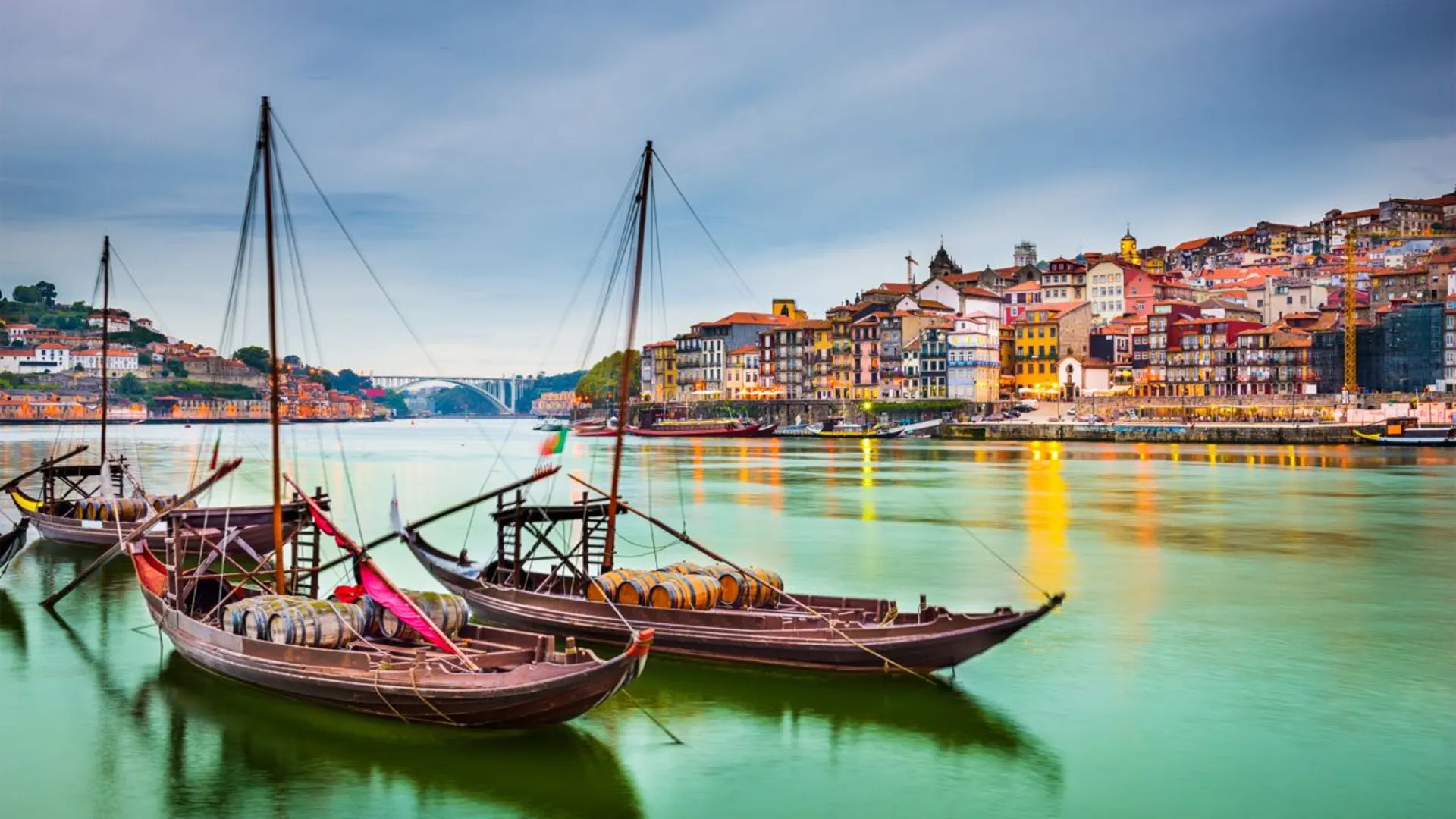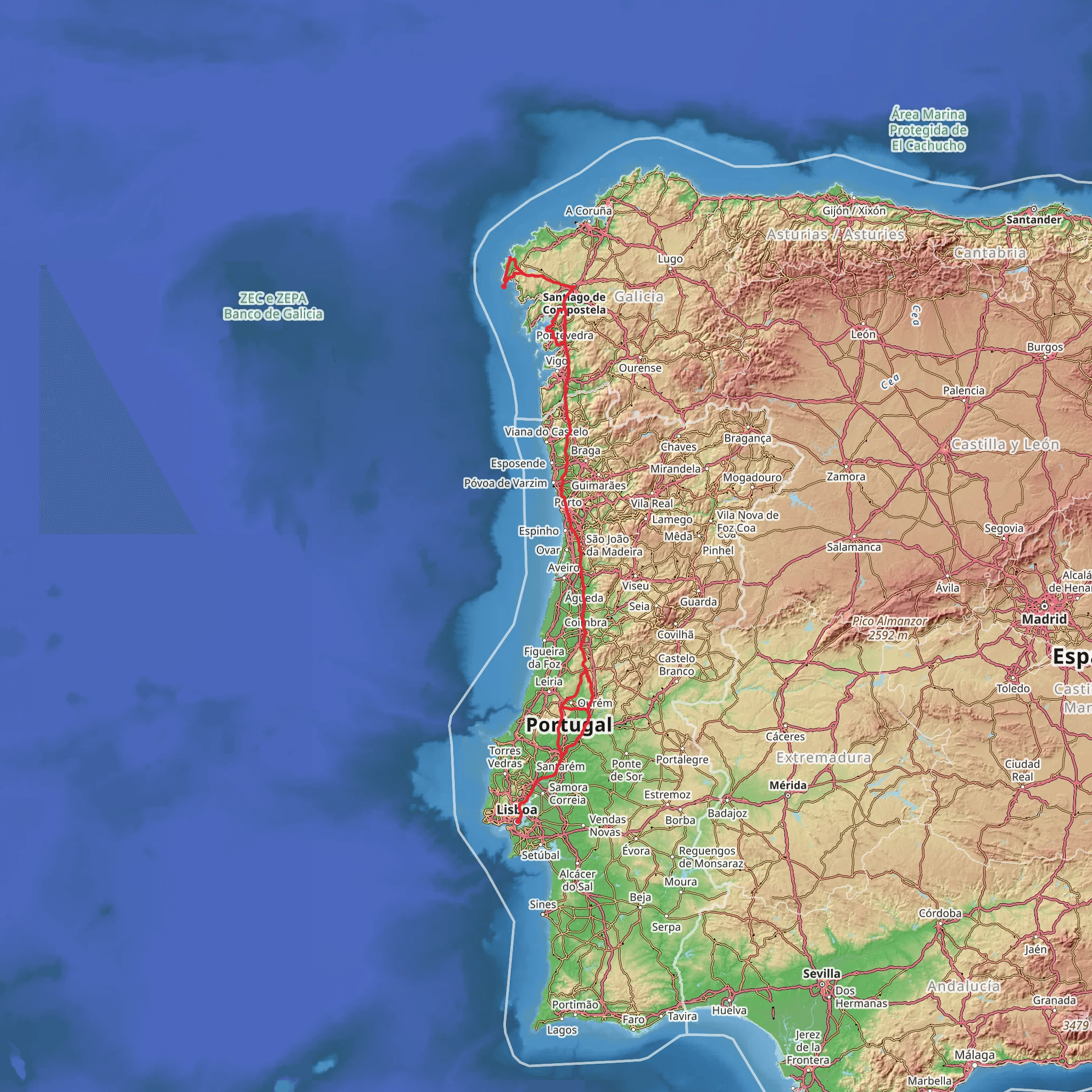Download
Preview
Add to list
More
707.8 km
~35 days
6758 m
Multi-Day
“Embark on the Camino Portugues, an enchanting blend of historic pilgrimage and scenic Portuguese landscapes.”
The Camino Portugues, a historic pilgrimage route to Santiago de Compostela, begins near the vibrant city of Lisbon, Portugal. This trail, spanning approximately 708 kilometers (440 miles) with an elevation gain of around 6700 meters (22,000 feet), offers a medium difficulty level, making it accessible to many hikers with a reasonable level of fitness.
Getting to the Trailhead
To start your journey on the Camino Portugues, you can reach the trailhead near Lisbon by various means. If you're arriving by air, Lisbon Portela Airport is the nearest major airport. From there, you can take public transportation or a taxi to the trail's starting point. For those driving, parking can be found in the vicinity of the trailhead, but it's advisable to research parking options in advance due to the busy nature of the city.
The Route Through Portugal
As you set out from Lisbon, the trail takes you through a diverse landscape of rolling hills, lush forests, and traditional villages. The initial stages of the Camino Portugues are characterized by the urban sprawl of Lisbon, but soon you'll find yourself walking through quieter suburban areas and into the serene countryside.
The route is well-marked with the iconic yellow arrows and scallop shell symbols, guiding pilgrims along the path. For additional navigation support, HiiKER is a valuable tool to ensure you stay on track and can plan your stops accordingly.
Historical and Cultural Landmarks
One of the most significant aspects of the Camino Portugues is its rich historical and cultural heritage. The trail has been used by pilgrims for centuries, and along the way, you'll encounter numerous chapels, monasteries, and churches that have served as waypoints for those on their spiritual journey.
Notable landmarks include the stunning Monastery of Alcobaça, a UNESCO World Heritage site, and the Santa Cruz Monastery in Coimbra, a city renowned for its ancient university and vibrant cultural scene.
Natural Beauty and Wildlife
The Camino Portugues offers a chance to experience the natural beauty of Portugal's landscapes. As you progress northward, you'll pass through the verdant regions of Ribatejo and Minho, with their vineyards and agricultural lands. The trail also takes you along the stunning Atlantic coastline, providing breathtaking views and the opportunity to spot a variety of seabirds.
Crossing into Spain
Upon reaching the Minho River, the trail crosses into Spain at Tui. From here, the landscape changes as you enter the Galician region, known for its lush greenery and rolling hills. The final stages of the Camino Portugues take you through picturesque Galician towns and villages before culminating at the majestic Santiago de Compostela, where the remains of St. James are said to be held in the cathedral.
Preparation and Planning
When planning your hike, consider the time of year, as temperatures can vary significantly. Spring and autumn offer milder weather, while summers can be quite hot. Ensure you have appropriate clothing, a good pair of walking shoes, and a reliable water supply. Accommodations along the Camino range from hostels to hotels, and it's wise to book in advance during peak seasons.
Remember, the Camino Portugues is not just a physical journey but a chance to reflect, meet fellow hikers from around the world, and immerse yourself in the history and culture of this ancient pilgrimage route.
Comments and Reviews
User comments, reviews and discussions about the Camino Portugues, Portugal.
4.75
average rating out of 5
20 rating(s)

